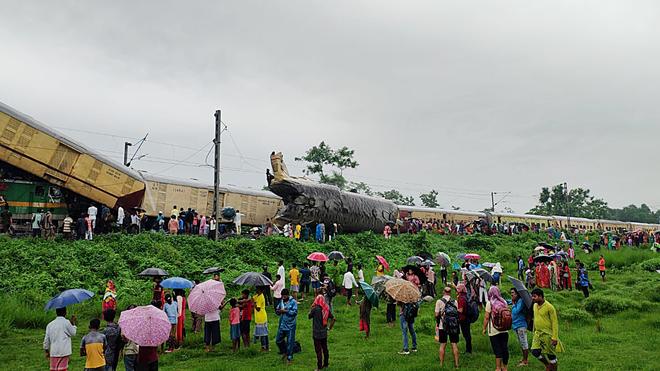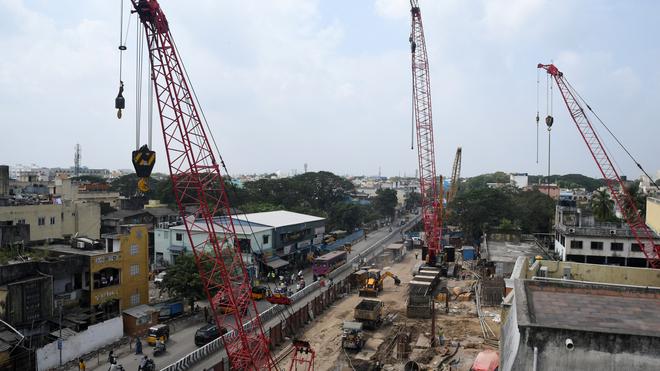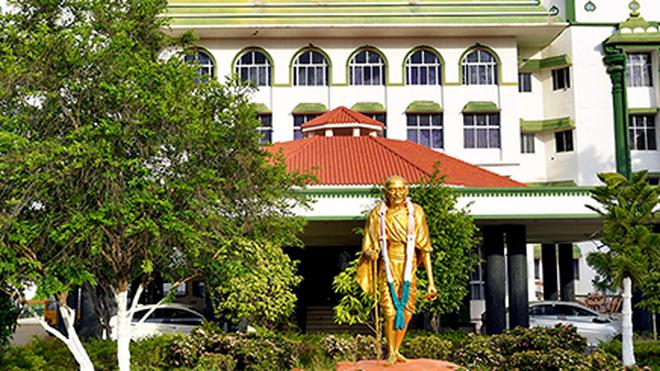Kanchanjunga accident: locopilot of goods train had authority to cross all signals in red
Documents made available to The Hindu revealed that the Station Master of the Rangapani railway station issued Travel Authority (TA-912) authorising the locopilot of the goods to cross all signals in red. The authority number 4918 clearly stated that “Automatic signaling has failed and you are, hereby, authorised to pass all automatic signals between RNI (Rangapani) station and CAT (Chattar Hat) station.” The authority also listed the designated numbers of the signals which the goods train could pass and that included the signal where the accident took place.
This contradicts the statement of the Chairman, Railway Board and Chief Executive Officer, Jaya Varma Sinha who claimed in an interview to a television channel that the goods train had “disregarded” the signal resulting in the accident.
Documents also revealed that the Kanchanjunga Express was given a similar authority to pass all signals in danger. The train had come to a halt at signal (AS-650) when the rear end collision took place.
Railway sources attributed two reasons why the train would have stopped. One, they say, even if there was an authority to cross the signal in red, the locopilot would stop for two minutes and then proceed at 15 kmph where the visibility was good and 10 kmph in case the visibility was poor. Another reason, which is under investigation, is an input that there was an Alarm Chain Pulling (ACP) due to which Kanchanjunga Express had stopped, the sources said.
Though the signal failure between Rangapani and Chattar Hat was detected at 5.50 a.m. on Monday, it was not declared as a prolonged failure since it was expected to be rectified by the Signal and Telecommunication department soon. The automatic block system continued to be in force and about seven trains were allowed to cross the signals in red with paper travel authorities issued by the Station Master, the sources said.
While the approximate speed of the goods train at the time of the accident is believed to be around 45 kmph, a senior railway officer said analysis of the speedometer would show the exact speed during collision and also whether the locopilot applied the emergency brakes to stop the train on seeing obstruction (Kanchanjunga Express) on the track.
The officer, who did not want to be quoted, said the issuing of paper authority authorising the goods train to cross all signals in red needed thorough investigation. “TA-912 is issued only when there is no obstruction and the section is clear. It is not known how the Station Master of the Rangapani railway station issued clearance when Kanchanjunga Express had not crossed the section...,” he said.
On the nature of the signal failure, railway sources said track circuits had failed due to lightning and thunderstorm in the area resulting in the signal failure. The reasons why Kanchanjunga Express stopped at the signal (AS-650), how the Station Master issued paper authority to pass signals in red when the section was not clear, whether the locopilot of the goods train applied emergency brakes to avoid the rear end collision and other circumstances that led to the accident would be known in the detailed inquiry to be conducted by the Commissioner of Railway Safety, the sources added.
Another senior railway officer said that going by the General & Subsidiary Rules, the locopilot of the goods train had violated the speed restriction of 15 kmph (in clear visibility). Quoting rule SR 9.02/1(a), he said that “when encountering an automatic signal at ‘ON” (red) aspect and after waiting for the prescribed time, the locopilot should proceed with great caution at a speed not exceeding 15 kmph...looking out for any possible obstruction and be prepared to stop short of the same.”


)



)





)





